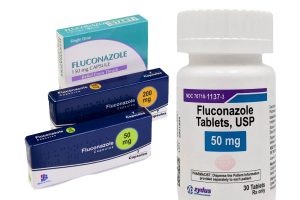Ear infections occur in children and adults and can cause pain, fever, headaches, and other symptoms. Antibiotics are used to treat ear infections. They work by killing bacteria that live in your body and cause an infection. This article highlights some of the different types of antibiotics for ear infection, how they work, and their side effects so you can make an informed decision about whether or not to take them.
Types of ear infections
Otitis externa. This outer ear infections canal causes inflammation, redness, and swelling. It’s usually caused by water trapped in the outer ear of s swimmer’s ear or after bathing.
Otitis media (middle ear infection)
This middle ear infection behind your eardrum affects children more often than adults. It is caused by bacteria or viruses, like influenza, during an epidemic. The fluid from an acute otitis media can drain into your throat through a small Eustachian tube, causing pain when swallowing or yawning.
Otitis media with effusion (fluid in the middle ear)
Fluid may accumulate behind your eardrum even if you don’t have symptoms of middle ear infections, such as hearing loss or pain when swallowing. Your doctor will decide whether to treat this condition based on how long it has lasted and whether you’re at risk for complications such as hearing loss over time.
Symptoms of ear infection
Ear infections are a common childhood illness, affecting about 25 % of children under age 5. Bacteria usually cause them. They often begin with cold symptoms like runny nose, congestion, or cough. The bacteria can then move from the throat to the eustachian tube (the tube that connects your throat to both ears). This makes it harder for fluid in your middle ear to drain properly and may lead to an infection.
Symptoms include:
Itchy ear canal – Some irritation may be felt inside your child’s ear canal and outside it, leading to discomfort when they move their head around or scratch at their ears with their hands or fingers.
Ear pain – Pain can cause restless sleep and irritability during the day.
Ear fullness – Sudden pressure buildup within any part of an infected person’s body may make them feel full in certain areas, like their stomachs, after overeating food during dinner.
Drainage – Drainage from infected areas such as pus from somewhere within someone’s body cavity due to lack of proper drainage and cleaning techniques used by those who care for them daily.
What causes ear infections
Ear infections are caused by a variety of risk factors, including:
Bacteria. These are the most common cause of the condition in children and adults.
Viruses. Some viruses can cause a condition that leads to earache, fever, headache, and hearing loss if left untreated for too long.
Allergies. Allergic reactions can block your ears with thick mucus and lead to acute eardrum inflammation, known as otitis media with effusion (OME). The most common allergens for this ear infection include dust mites and pet dander, but any allergy could have similar results if left unchecked for too long – even seasonal allergies!
Antibiotics mode of action
A common way to treat an ear infection is by using antibiotics. Antibiotics are medications that can kill bacteria, which are usually present in your body’s tissues and fluids. You can use them both to cure the disease and prevent ear infections from returning.
How does this work?
First, you need to know that different types of bacteria cause different kinds of diseases: some cause skin infections (like acne), others cause respiratory tract (breathing) problems like pneumonia or bronchitis (where the airways become inflamed), and still, others cause blood infections (sepsis).
The second thing is that antibiotics aren’t effective against every bacterial infection. They are only effective against specific bacterial cells called “gram-positive” or “gram-negative.” Gram-positive bacteria cause most ear infections; these include Staphylococcus aureus (staph) and Streptococcus pyogenes (strep).
Are all antibiotics the same?
Antibiotics are not the same. The strength of an antibiotic depends on the type of bacteria it is designed to kill. In addition, some antibiotics have a more prolonged effect than others, and some may even require more than one dose to stop the condition.
Some antibiotics are more effective against certain types of bacteria than others. For example, penicillin is often used as an antibiotic for ear infections because it works well against streptococcus pneumoniae, which causes ear infections in children under two years old.
Antibiotic ear drops
These are used for ear infection medication. They’re usually prescribed by your doctor and can be given as a single dose. Antibiotic solutions are often used to treat middle ear infections.
At first, the antibiotic in these suspensions works to kill the infection-causing bacteria in your ears. Over time, it will also stop them from spreading into other parts of your body. The antibiotics in these medicines can help prevent the spread of infection because they make the mucous membranes surrounding your eardrum less hospitable for germs that cause diseases (like bacteria).
Examples of ear drops
Various antibiotics get your ear infection treated quickly. They include:
- Cortisporin (a combination of neomycin, polymyxin B, and hydrocortisone)
- Ofloxacin (an antibiotic in the fluoroquinolone family)
- Ciprofloxacin (also a fluoroquinolone)
- Ciprodex (a combination of dexamethasone and Ciprofloxacin)
- Xtoro (a combination of erythromycin, sulfacetamide sodium, polymyxin B sulfate, and hydrocortisone for acute otitis media
How to administer
Before administering the medication, ensure your child is sitting or lying comfortably. If they are old enough to cooperate, ask them to turn their head slightly so you can drop some in their ear tubes.
With young children who cannot sit up on their own, it’s a good idea to lie them down on your lap so that gravity helps it go into the ear canal more easily.
Next, empty a few drops from the bottle onto a cotton swab and clean out any junk stuck there: dried wax (which looks like yellowish candle wax), dirt particles, and other debris from everyday life! You don’t want these things blocking the opening of their ear when you drop antibiotic ointment into it!
You’ll also want to ensure there isn’t anything left behind after cleaning. If necessary, use another cotton swab dipped in an alcohol solution (or just plain rubbing alcohol) to ensure all traces have been removed before applying medication.
Oral antibiotics for ear infection
Oral antibiotics are available as tablets, capsules, and liquid. You can take both tablets and capsules with or without food. Liquid antibiotics are usually taken on an empty stomach unless stated by your doctor or pharmacist.
When you start taking antibiotics, take them exactly as your doctor or pharmacist instructed – even if you feel good after a few days. This is because the condition may not have cleared up yet; it’s also essential to maintain regular dosing to prevent the bacteria from building up resistance against the antibiotic you’ve been prescribed.
For elders 65 years old or over, please ask your doctor if it would be safer for you to take a different type of medicine. Some factors may affect the effectiveness of antibiotics in older adults (elderly), such as liver problems (ageusia), kidney problems (glomerulonephritis), or heartburn caused by acid-reducing medicines (antacid).
Examples of oral antibiotics for ear infection
The following are examples of oral antibiotics that may be prescribed for the treatment of ear infections:
Amoxicillin is a popular antibiotic that can treat strep and non-strep infections. It usually comes in 250 mg capsules but sometimes is also available as a suspension (liquid) or chewable tablets.
Augmentin: This medication combines amoxicillin with clavulanic acid to form a time-released tablet. Hence, it helps prevent diarrhea associated with oral antibiotics like amoxicillin. In addition, it is often used when treating children because it doesn’t contain magnesium, so it won’t cause stomach upset or constipation more than other medications.
Azithromycin: An azole macrolide antibiotic used to treat many bacterial infections, including pneumonia, skin infections, and earaches; however, it isn’t very effective against MRSA strains of Staphylococcus bacteria.
Keflex (cephalexin) is a macrolide antibiotic for children’s ear infections, especially if they have uncomplicated otitis media caused by Group A Streptococcus bacteria.
Septra(sulfamethoxazole/trimethoprim): Can be taken orally and intravenously if necessary; however, it is usually reserved for severe cases. When there’s more than one infection, such as pneumonia and ear pain, present at once, it serves as pain relief.
How to administer oral antibiotics
Please take it as directed
Take it with a glass of water
Do not exceed the recommended dose
Do not stop taking the medication unless your doctor tells you to
Suspension vs. Solution
There are two ways to administer antibiotics for ear infections: suspension and solution. The suspension is the more dense liquid form of your medication, while the solution is the more watery liquid. Both forms should be given by mouth or dropper into the ear (not in it).
For most people, suspensions are preferable because they have higher concentrations of active ingredients and can be easily administered via dropper. However, this isn’t always true for everyone-if you aren’t sure which you prefer, talk to your doctor about how best to administer your antibiotic for ear infections.
How to use suspensions and solutions
You can use a dropper to put the suspension or solution into your child’s ear. However, make sure you shake it well before using it. If you don’t feel comfortable with this, ask someone else to do it for you. After putting the medicine in their ear, wait for at least 30 minutes before giving any other medications or cleaning their ears (if needed).
Best antibiotics for ear infection
Choosing the right antibiotic for your child’s ear infection can be tricky. Ear infections are common and incur many doctor visits, so doctors have many chances to prescribe antibiotics. Unfortunately, in recent decades, the overuse of antibiotics has increased bacterial resistance to the drugs we use to treat them, and this is especially true for children.
The best way to avoid unnecessary antibiotic prescriptions is by following your doctor’s instructions exactly as written. This includes taking all the medication prescribed (even if ear infection symptoms seem to improve), waiting for the entire course before stopping treatment, and not treating yourself or giving any drugs without consulting your physician first.
Suppose you do need an antibiotic prescription from your doctor. In that case, Ciprofloxacin usually works pretty well for ear infections caused by Streptococcus pneumoniae bacteria like pneumococcal pneumonia, meningitis, and otitis media (inflammation of the middle ear).
What are the side effects?
Antibiotics can have side effects that range from mild to severe. They include nausea, vomiting, diarrhea, rashes, and yeast infections in women prone to them. Other common side effects include dizziness or lightheadedness (especially after standing up), a headache or pain in the area of the ear infection, and sometimes ringing or buzzing in the ears (tinnitus).
The most serious potential risk is an allergic reaction known as anaphylaxis which can be life-threatening and need immediate medical attention if you notice any of these signs:
- Sudden wheezing
- Abdominal cramps
- Hives on skin
What are the precautions?
Before taking antibiotics, it’s essential to be aware of the following precautions.
Do not take a drug if you have an allergy to it or any other ingredient in this medication.
Inform your doctor if you are allergic to any antibiotic, especially erythromycin or tetracycline.
Tell your doctor if you have kidney or liver disease or a history of seizures (epilepsy).
Tell your doctor if you are pregnant or plan to become pregnant while taking this medication. Do not start or continue the drug without first talking to your doctor if you are pregnant because it could harm the unborn baby. The effects on an unborn baby are unknown.
Tell your doctor if you are breastfeeding or plan to breastfeed while taking this medication. It is unknown whether this drug passes into the breast milk and could harm a nursing infant.
Tell your doctor if you are taking any other medication that may interact with the antibiotic prescribed for your ear infection.
Follow the directions on the antibiotic label carefully, and do not exceed the recommended dosage.
Conclusion
We hope you learned the different types of antibiotics for ear infections and their proper administration from this article. If you are experiencing an ear infection symptomatic, please get in touch immediately so we can help!





